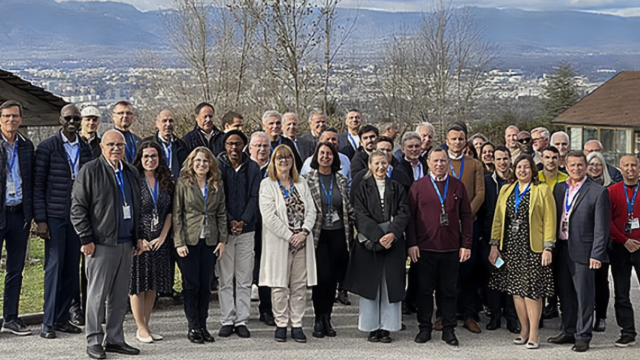Focusing on what really counts

Driving while intoxicated is a serious offense because the driver is incapable of operating a vehicle safely, thus endangering themselves and other motorists. Statistics show that driving under the influence (DUI) of alcohol or recreational drugs is a predominant cause of traffic accidents. The level of intoxication is typically determined by a measurement of blood alcohol content or BAC. Police officers routinely pull suspected drivers over to test their BAC level using a breathalyzer.
The story is told of a police officer who was staking out a bar to catch potential DUI offenders. It was past midnight when an extremely drunk man stumbled out of the bar. He went to the parking lot fumbling for his keys, trying to unlock five or six cars before locating his. Meanwhile, several patrons left the bar and drove away.
Once inside his car, he rummaged around the switches, trying out the brakes, lights, and windshield wipers. More patrons left the bar, until finally his was the only car left in the parking lot. He started his car and departed. As soon as he pulled away, the officer went after him, pulled him over, and gave him the breathalyzer test. When it came up negative, the officer was puzzled and muttered to himself, “How could this be? The breathalyzer must be broken.”
The driver grinned and said, “No, the breathalyzer is OK. Tonight I’m the designated decoy!”
What’s a decoy? Merriam-Webster Dictionary suggests two definitions. First, a decoy is “someone or something used to draw attention away from another.” Second, a decoy is “someone or something used to lure or lead another into a trap.”1 A decoy is specifically designed to distract and deceive. These two characteristics are significant as we think about spiritual decoys.
Distraction
The first purpose of a decoy is to distract or divert attention in order to achieve an expected outcome. In the story, the “designated decoy” is a person who remains sober but acts drunk. His job is to divert the attention of the police officer so that his drinking buddies can escape unnoticed.
In our spiritual journey we are prone to be distracted. We may be preoccupied with many good things at the expense of the most important thing. A decoy is meant to obscure the essentials from the peripherals and the eternal from the temporal. Some are sidetracked by conspicuous consumption. Many are “choked with cares, riches, and pleasures of life” (Luke 8:14). Others are fixated upon marginal issues that loom larger than life. Some major in minors until they are caught in the quagmire of confusion. Still others are bogged down with the busyness of everyday living, while prayer, Bible study, and spiritual discipline are neglected.
The apostle Paul admonished Christians to serve the Lord “without distraction” (1 Cor. 7:35). Comparing the two sisters Mary and Martha, Jesus commented that “Martha was distracted with much serving” (Luke 10:40). She was “worried and troubled about many things” (verse 41). Her sister Mary, however, was ever attentive, sitting at the feet of Jesus and listening to Him. Martha had been distracted by things that were of secondary importance. “She needed less anxiety for the things which pass away, and more for those things which endure forever.”2
More important, the church is mandated with a marching order of winning the world for Christ (Matt. 28:16-20). First things must come first. We should be about our Father’s business and refuse to be sidetracked.
Deception
The second purpose of a decoy involves deception. Hunters routinely use decoys to lure animals to come within shooting range. A duck hunter, for example, uses a decoy made to look just like a real duck. He places the decoy in the water and makes a duck call that sounds like a real duck. When ducks fly overhead, they hear what they think is another duck calling them. As they fly closer, they spot what they think is a real duck. So both the fake duck and the fake duck call entice the ducks into believing the real thing. They become dinner for the hunter.
Just like the duck hunter, Satan and his evil angels use trickery to snare and mislead. They trick us to accept the fake instead of the real. Spiritual decoys are highly perilous because they are truly lifelike. They are designed to charm and mesmerize. The apostle Peter tells us how to make sure that we are never spiritually deceived and drawn in by artificial decoys. “For we did not follow cunningly devised fables when we made known to you the power and coming of our Lord Jesus Christ, but were eyewitnesses of His majesty” (2 Peter 1:16). In the next chapter Peter highlights some of Satan’s decoys and distractions at the end of time (cf. 2 Peter 2:1-3).
Jesus Himself warned about the many fake teachers and fake christs that would arise and lead many astray (Matt. 24:1-14). Peter, Paul, and John also repeated the same warning (2 Peter 2 and 3; 2 Cor. 11:13-15; 1 John 2:18-27; 4:1-6). These tantalizing teachings are nothing but decoys designed to deceive, confound, and contradict the clear commandments of God (1 Tim. 4:1-5; 2 Tim. 4:3, 4; Mark 7:5-13).
The enemy and his angels are decoy agents par excellence. They detract and deceive—“even the elect” (cf. Matt. 24:24). We need to know the schemes of the enemy, refuse to be blindsided, and test the spirits. The fake and the real are almost indistinguishable. The decoy may look like a duck and sound like a duck, but it’s not a duck by any means. “None but those who have fortified the mind with the truths of the Bible will stand through the last great conflict,” wrote Ellen White.3 “Only those who have been diligent students of the Scriptures . . . will be shielded from the powerful delusion that takes the world captive.”4
There is, however, good news. When we spend quality time in the Word each day, God’s Spirit assures us of being able to discern the fake from the real, the essentials from the nonessentials, and apathy from mission.
1 www.merriam-webster.com/dictionary/decoy
2 Ellen G. White, The Desire of Ages (Mountain View, Calif.: Pacific Press Pub. Assn., 1898, 1940), p. 525.
3 Ellen G. White, The Great Controversy (Mountain View, Calif.: Pacific Press Pub. Assn., 1911), pp. 593, 594.
4 Ibid., p. 625.
G. T. Ng, originally from Singapore, serves as executive secretary of the General Conference and lives with his wife, Ivy, in Silver Spring, Maryland, United States.








